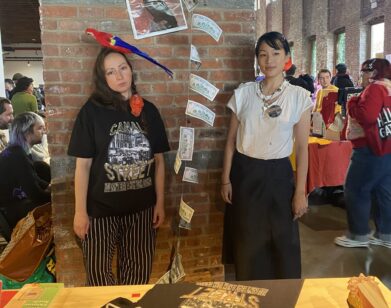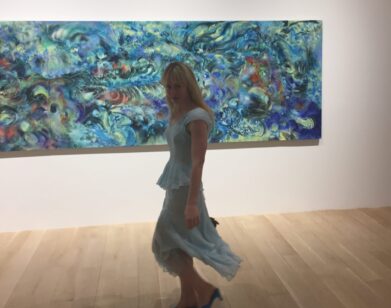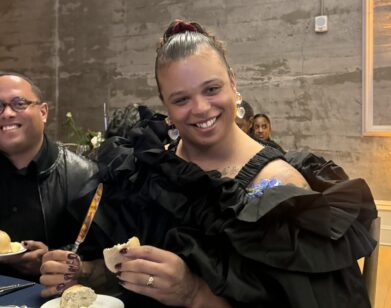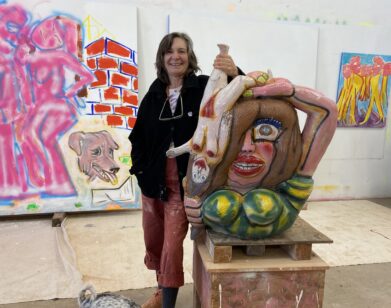The Burden of Being Bourdin
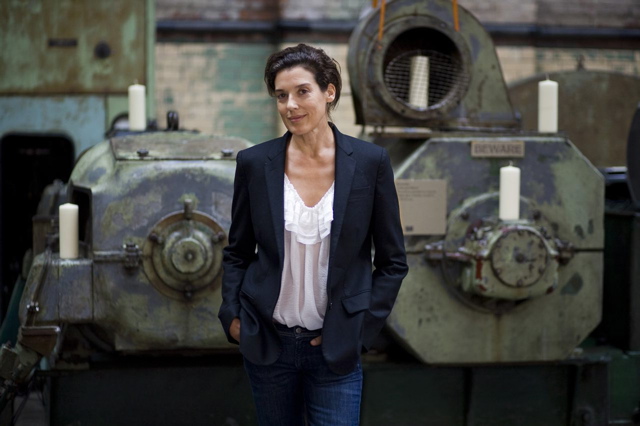
The theme of model as muse will be thrown around a lot this month (Kate Moss in a gold lame toga creation already comes to mind). But the relationship between photographer and model is more than an excuse for a garden party; as dramatized by Antonioni’s Blow Up, it’s an historically complex dynamic, with the model not just the object of adoration and contemplation, but of camradery, projection, and anxiety. When it comes to the rather dark persona of late French photographer Guy Bourdin—who, among contemporaries Chris von Wagenheim, and Helmut Newton, propagated the neo-glam look of the late 1970s and 1980s—the relationship between photographer and model was notoriously neurotic and compulsive, and verging on abusive. Without a doubt, Bourdin struggled with personal demons. You need not look further than to his work, in which leggy, typically nude models had their heads cropped off; or they posed submissively, their faces hidden; or sort other violent thing afflicts them in the course of the editorial narrative.
Tomorrow Unseen: Guy Bourdin opens at The Wapping Project in London, with works lent by Phillips de Pury and Bourdin’s son and heir, Samuel Bourdin, and curated in collaboration with Bourdin’s frequent muse, Nicolle Meyer, who modeled in countless numbers of the photographer’s French Vogue editorials and nearly all of his risqué Charles Jourdan shoe ads. We sat down with Meyer to talk about the complicated and dark life of Guy Bourdin, as well as the gentle side that those who were not his muse did not get to see.
MC: At what point in Bourdin’s career did you start working with him?
NM: I worked with him from 1977 and 1980, and it was a very intense period where with did a lot of Charles Jourdan ads, Vogue editorials, [and a] Pentax calendar. I worked with him in what was considered the peak years of his career, where he produced a very intense body of work and iconic images within [that] body of work.
MC: What was your first encounter with Guy Bourdin?
NM: I was 17. I was a dancer and then I was with a little modeling agency in Paris- I’m American-French [and] I moved to Paris when I was 12-and they sent me to Guy on a go-see, but I hadn’t much to show-I had one or two test shots. He was very nice, very gentle. He looked at my photo from my [agency] card and then I got a call about a Vogue editorial at the end of the week.
Nicolle Meyer. Photo by Antony Crook.
MC: He has a reputation for being abusive to his models. In your experience, is that a misrepresentation?
NM: He has a terrible reputation of being dark and pushing everyone to tears. But I don’t know, my work relationship with him was not at all like that. The only time I saw him get very frustrated was when we took a two-month trip around the [United] States… but he never focused anger at me or put me in a position where I felt upset or uncomfortable.
MC: According to what I’ve read, it seems he felt very strongly that he wanted all of his work to be destroyed posthumously. That said, do you think this exhibition, or your book and exhibitions like the first retrospective at V&A in 2003, goes against his wishes?
NM: They say that but talking with his son Samuel, it seems that [Guy] was putting things together before he died an was potentially thinking of publishing something. It’s controversial. Going through the archives when working on my book, Guy did save a lot of material, especially from the period when I worked with him-not just the commissioned ones, but the making of. So he did like them; he did keep them.
MC: Did you maintain a relationship with Bourdin after you stopped modeling?
NM: I stopped modeling very abruptly because I went into the music business. I joined a band called Fred Banana Combo-a punkish German New Wave [band]-and I didn’t have anything to do with the fashion world. But for my last album cover in 1988, I called him out of the blue and he was super sweet, so he did the record cover. So, because I was older, that’s when I had more of a [adult] relationship with him.
MC: The recent Met gala brought a lot of attention to the muse-artist relationship. What do you think creates that connection between artist and muse? Did you have a sense while you were working with him that you had a unique relationship with him?
NM: I couldn’t say that I was acting as a muse while I was working with him. I knew there was a great work chemistry and that I really loved working with him, and I really trusted him implicitly. I think he picked up on that. You couldn’t be prissy working with Guy, because he put you in situations-like hanging [from things] and other difficult positions-and he also did a lot of nudes at the time. I always find that everyone goes into that morbid side of [his work] but I think the work is really painterly and glamorous-those aspects are not touched on enough.
MC: Were you aware at that age of how iconic these images would become?
NM: My parents were fine art collectors, so I always grew up with strong images, so somehow I instinctively connected with what he was doing. I somehow felt it and he picked up on that.
MC: Were you aware of his reputation before you worked with him and if so, was that intimidating as just a teenage girl?
NM: When I met him, I didn’t know about his notoriety. I was enthusiastic. I think he also liked my young face-something that was fresh and uninfluenced.
MC: Were your parents concerned when seeing the images?
NM: Of course, my mother filtered out the nude shots from my dad… but they were supportive.

